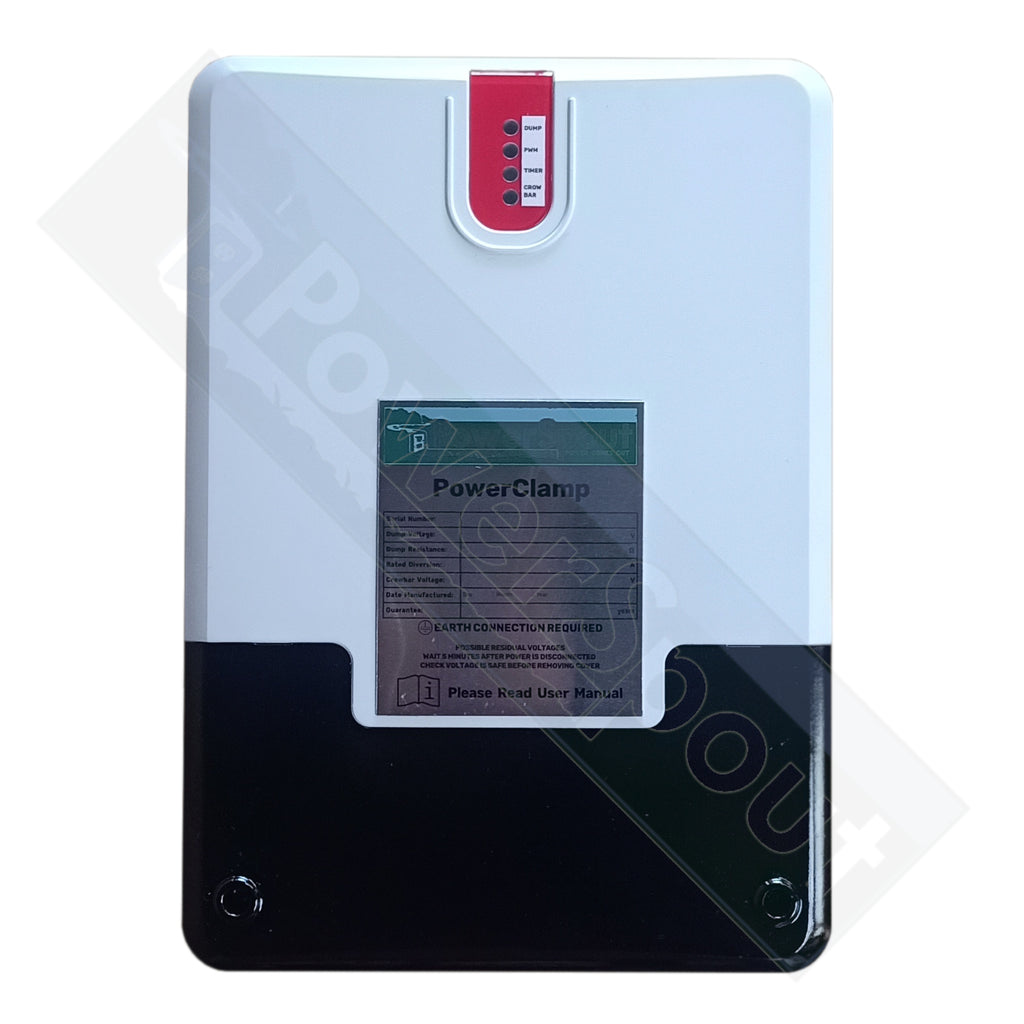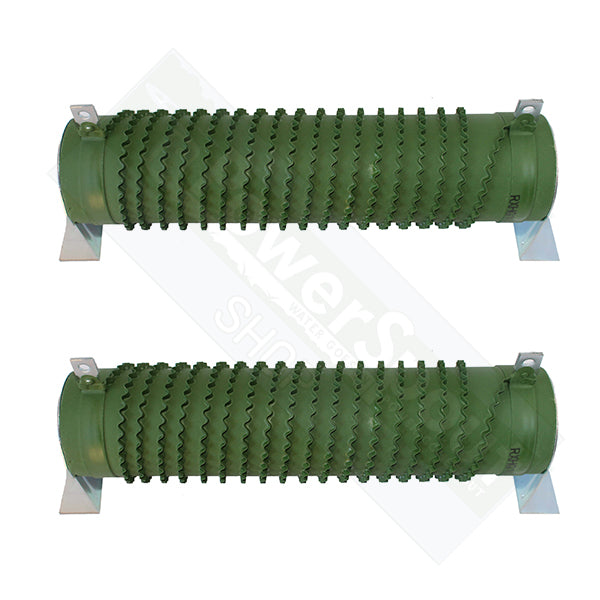-
Hydro Turbines
-
Parts & Accesories
-
React Solar Pumps
-
React Pump Info
-
Dealer Products
-
Dealer Documents


The PowerClamp is a device for limiting the maximum output voltage of a PowerSpout hydro turbine, so as to protect sensitive equipment such as charge controllers or grid-tied inverters (GTIs) that are connected to it. It is an external device, wired to the output of the turbine. It uses PWM diversion of current to a heating load as a means to limit the voltage that is passed on. For added security it incorporates an independent fail-safe crowbar that safely short-circuits the turbine's entire output current if the voltage climbs too high.
The primary purpose of the PowerClamp is to allow PowerSpout turbines to operate at a more appropriate (higher) voltage when connected to common MPPT and GTI equipment. Open circuit condition is prevented by the PowerClamp's diversion load, so there is no danger of damage.
| Model | Turbine Design Voltage | Minimum Dump Voltage | Initial Dump Voltage | Maximum Dump Voltage | Crowbar Voltage |
| 120V (ELV) | 80 | 77 | 90 | 103 | 120 |
| 150V | 100 | 95 | 110 | 125 | 150 |
| 250V (No Crowbar) | 80 | 77 | 90 | 103 | - |
| 250V | 170 | 163 | 190 | 217 | 250 |
| 450V | 270 | 258 | 300 | 342 | 400 |
| 600V | 270 | 258 | 300 | 342 | 400 |
We are in the process of updating the user manual to reflect the recent changes to this product.
This PowerClamp has some new features:
This PowerClamp needs to be installed in an enclosure out of the weather.
The air resistor(s) which comes with the PowerClamp will need to be mounted in such a way which:
Please read the detailed specifications and installation guide prior to purchase with your PowerSpout hydro turbine.
We have a un-edited video that shows how a PC2 can be used. We hope this helps.
Please read our higher voltage applications quide for more detailed information on this topic.
